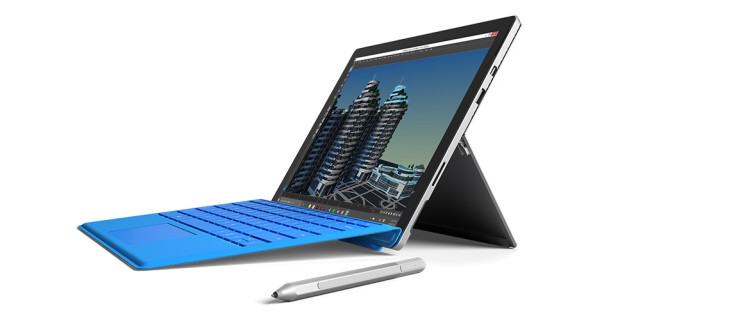Microsoft Surface Pro 4 vs Apple iPad Pro vs Google Pixel C: Which one should you pick?

Microsoft finally brought the anticipated Surface Pro 4 at its Windows 10 hardware event on Tuesday (October 6). The new tablet is designed with brand new hardware to compete against the recently announced Apple iPad Pro and Google Pixel C. Although all the three tablets are yet to arrive in the market, we are providing a detailed comparison of the three to let you choose the best.
Display
The Microsoft Surface Pro 4 features a 12.3in display with 2,732 x 1,824 pixels resolution that delivers a pixel density of 267ppi. The Apple iPad Pro, on the other hand, has a 12.9in IPS display with 2,732 x 2,048 pixels resolution and 265ppi pixel density and the Google Pixel C has a 10.2in LCD display with 2,560 x 1,800 pixels resolution and 308ppi pixel density. This shows that the iPad Pro has the largest display in terms of size compared to the Surface Pro 4 and Pixel C, but the pixel-per-inch (ppi) count is the highest on the Pixel C and the lowest on the iPad Pro. In addition, Microsoft has provided its PixelSense technology, while Apple is using its Retina display technology.
Design
As a successor to the Surface Pro 3, the Microsoft Surface Pro 4 has a metallic build that weighs up to 786gm. The iPad Pro is lighter than the Surface Pro 4 with a weight of 723gm, but we can't call it the lightest as Google has not yet specified any details about the weight of the Pixel C.
Hardware
Microsoft has provided a 64-bit Intel sixth-generation (Skylake) processor on the Surface Pro 4 that comes in a variety of models, including Intel Core M3, Core i5 and Core i7. The Apple iPad Pro has an Apple A9X, whereas the Pixel C has Nvidia Tegra X1. Intel's sixth-generation processors come in dual- and quad-core options and are equipped with up to Intel Iris graphics, 16GB RAM and 1TB SSD storage. Compared to the Surface Pro 4's processor, the Apple A9X chipset on the iPad Pro has a 64-bit ARM architecture and comes along with M9 motion coprocessor, 4GB of RAM and up to 128GB SSD storage. Google has used 64-bit Nividia Tegra X1 with Maxwell GPU, 3GB of RAM and up to 64GB storage.
Operating system
The Microsoft Surface Pro 4 comes preloaded with Windows 10 that offers features like Continuum and Windows Hello and supports a wide range of Windows apps. Apple's offering in the form of the iPad Pro runs on iOS 9, while Google has provided Android 6.0 Marshmallow on the Pixel C. In terms of app support, it is quite difficult to predict which operating system has the largest app base and all the three platforms are quite popular among developers across the global markets, though there are certain differences on the part of their interfaces and features.

Battery life
Microsoft claims that the provided battery pack on the Surface Pro 4 delivers up to nine hours of video playback on a single charge, whereas Apple is claiming 10 hours of video playback on the iPad Pro and Google is promising a 10-hour mixed battery life on the Pixel C.
Accessories
Microsoft is offering an all-new Surface Pen and a fingerprint sensor-equipped Surface Pro Type Cover for the Surface Pro 4. Similarly, the iPad Pro comes with an optional Smart Keyboard and Apple Pencil support and the Pixel C has a keyboard cover option. These accessory options take the three tablets to the world of hybrid devices, and make them capable of competing against notebooks.
Price and availability
The Microsoft Surface Pro will be available in late October with a starting price of $899 (£589), while the Apple iPad Pro will hit stores in November with a minimum price of $799 (£524). The Google Pixel C is expected to be available sometime later in the year with a price starting from $499 (£327).
Conclusion
The Microsoft Surface Pro 4 has a decent display, 64-bit Intel Skylake processor, Windows 10 operating system and Surface Pen as a few of its major pros over the Apple iPad Pro and Google Pixel C. However, the iPad Pro has Retina display technology, iOS 9, Apple Pencil support and better battery life than the Surface Pro 4, at least on paper, to take on the competition. If you really need a next-generation hybrid and do not want Windows 10 or iOS 9, the Google Pixel C could be the best pick for you.
© Copyright IBTimes 2025. All rights reserved.





















